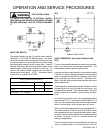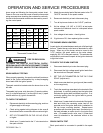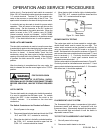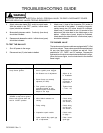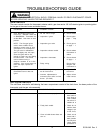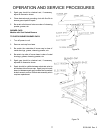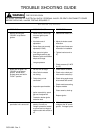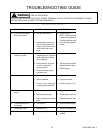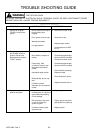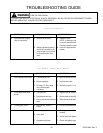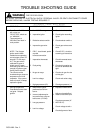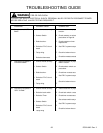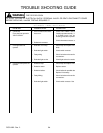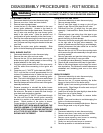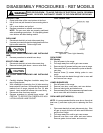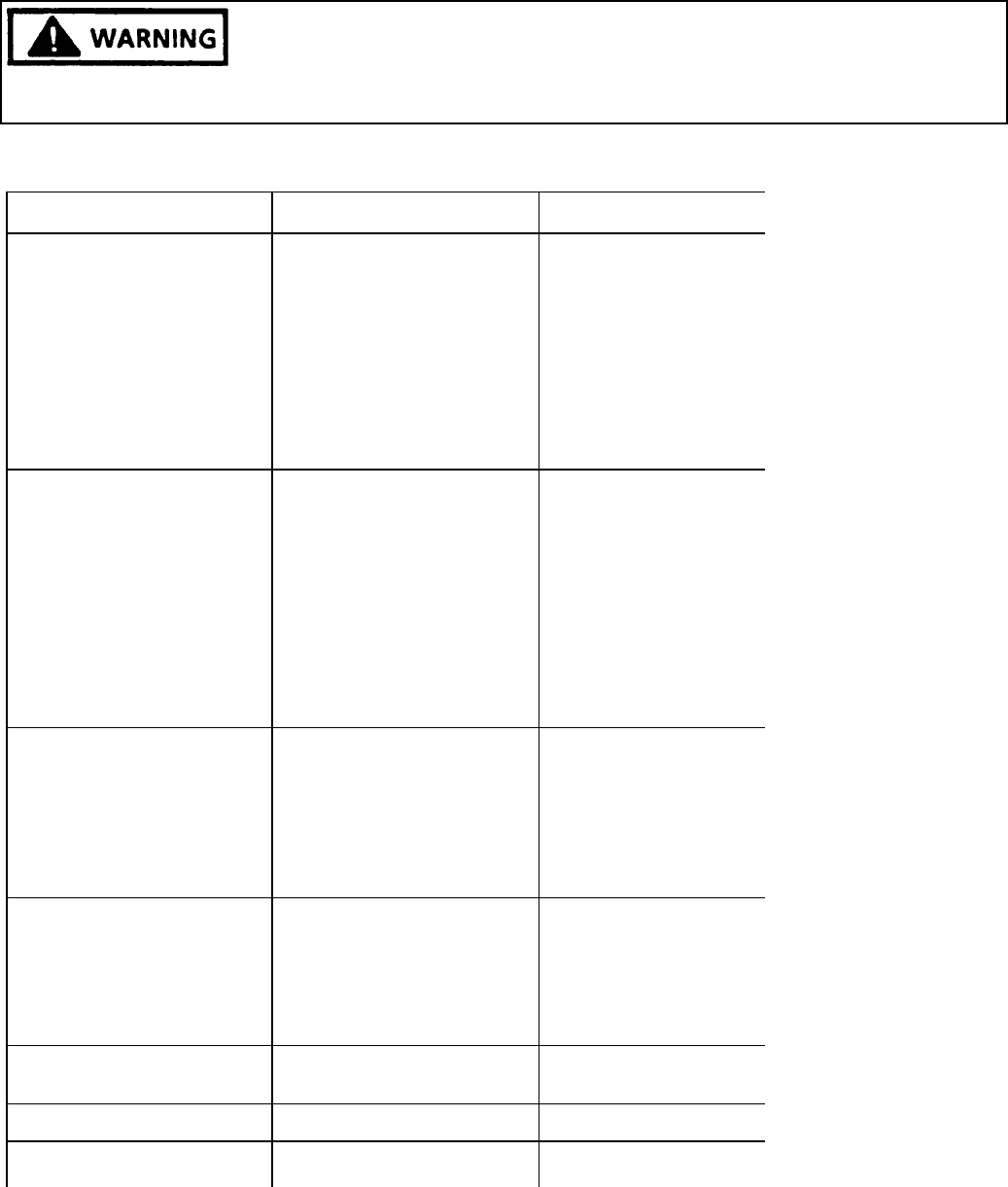
TROUBLESHOOTING GUIDE
FIRE OR EXPLOSION
TO AVOID THE RISK OF ELECTRICAL SHOCK, PERSONAL INJURY OR DEATH DISCONNECT POWER
BEFORE SERVICING, UNLESS TESTING REQUIRES IT.
79 RC231002 Rev. 3
PROBLEMS POSSIBLE CAUSE CORRECTION
4. Unit continues to spark
after it is turned off.
A.
B.
Shorted valve switch.
Switch has been pulled up
and off of fixed positon on
valve so that it is not turned
to off positon with valve
stem.
A.
B.
Replace switch.
NOTE: If shorting is cau
s
customer should be adv
i
Carefully reposition swit
c
from off to high several t
i
broken.
5. No spark or only random
spark at on ignitor.
A.
B.
C.
Most common cause is a
cracked ignitor or a pinched
ignitor lead wire permitting
current leakage.
Bad connection of ground
or lack of continuity to
ground of ignitor.
Cracked or broken ignitor
extension lead.
A.
B.
C.
Replace ignitor lead or
e
Tighten ground connect
i
ground path from ignitor
Replace ignitor.
6. Yellow tipped burner flame. A.
B.
C.
Too little primary air.
Burner head bent.
If using L.P. gas, range may
not be properly converted.
A.
B.
C.
Open air shutter on burn
e
Level burner head.
Check for proper L.P. c
o
7. Flame blows away from
burner.
A.
B.
C.
Too much air.
Gas pressure too high.
Heavy draft around cooktop
area.
A.
B.
C.
Slightly close air shutter
t
Check pressure at orific
e
Eliminate source of draft
.
8. Flames flash back into
mixer head.
A. Too much air. A. Close air shutter slightly.
9. Floating lazy flame. A. Blocked burner. A. Check for possible bloc
k
10. Gas smell in kitchen. A. Leak in pipe joint. A. Check gas connections
needed.
Non-Sealed Top Burners



